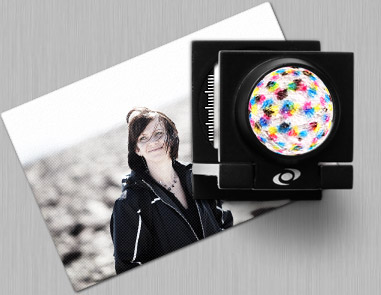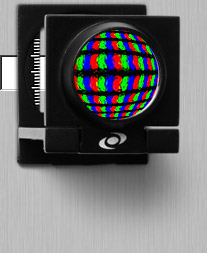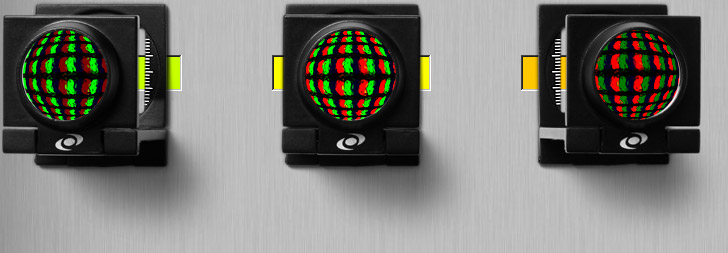Color reproduction
Most color image reproductions can be grouped into one of two main categories – those printed on paper and those displayed on computer and television screens. These two technologies work in similar yet opposite ways. In this article we will look at how color images are reproduced on printers, as well as on computer and television screens.
Printers

Printers produce color by mixing together three* different colors of ink: Cyan, magenta and yellow. These inks are typically not mixed directly, but printed on paper as tiny dots. If you take a magnifying glass and look at a printed page, you will see these tiny dots. At normal viewing distances, the tiny dots blend together and we see the color as if the inks were mixed directly.
This process of printing color is called the subtractive color model. It is called the subtractive color model because you start with white (the color of the paper) and then subtract light by darkening the paper with ink.
A wide range of different colors can be produced by varying the amount of each of the three inks. Light pastel colors require only a small amount of ink, while dark colors require a lot more ink. Black is produced my mixing together all three inks.
*Most printers also make use of an additional black colored ink. Black ink is more practical (and economical) to use, as opposed to mixing together the other three inks.
Computer and television screens

Computer and television screens use the additive color model, and it works just the opposite. Instead of starting with a white paper and subtracting light, computer screens start with a black screen and add light. This is done with the use of tiny colored lights. These lights are arranged in groupings of three colors - one red, one green and one blue. Again, these lights are too small to see with the naked eye, but if you hold a magnifying glass over a white part of the screen, you will see them clearly.
The colors of these three lights are carefully chosen to allow a computer screen to individually stimulate each of the eye's three cone types (see previous article). The red light stimulates the L cones, the green light the M cones, and the blue light the S cones. This ability to stimulate the three cone types individually allows a computer screen to reproduce almost any color that the eye can see.
The color white is the color we see when all three cone types receive equal amounts of light. By switching on all three lights simultaneously (red, green and blue), a computer screen can produce the color white, even though on closer inspection we find no white light, only the three colored lights. The color black is the absence of all light, and is the color you see when all three lights are turned off.
Apart from turning the three lights on or off, it is also possible to precisely adjust the individual lights to any intensity between completely on and completely off. For example, when both the red and green lights are turned on, while the blue light is turned off, we see the color yellow (bottom middle). When the red light is dimmed slightly, the color shifts more towards the color lime (bottom left). And when the green light is dimmed, the color shifts towards the color orange (bottom right).

By precisely varying the intensity of each of the three colored lights, computer and television screens can produce millions of different colors.
Summary
A wide range of colors can the reproduced by mixing only three primary colors. In the additive color model (as used by television and computer screens) the primary colors are red, green and blue (RGB). In the subtractive color model (used by printers) the primary colors are cyan, magenta and yellow, and with black added to keep costs down (CMYK). Color reproduction using three primary colors, either additive or subtractive, is the most widely used method of reproducing color.